 Leading Blog | Posts by Month |
 Leading Blog | Posts by Month |
06.30.23

LeadershipNow 140: June 2023 Compilation
See more on
Posted by Michael McKinney at 07:32 AM
06.29.23

Leading Thoughts for June 29, 2023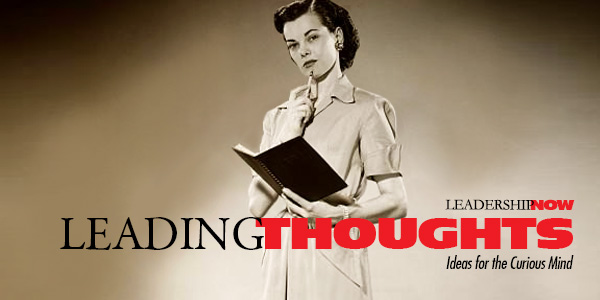
IDEAS shared have the power to expand perspectives, change thinking, and move lives. Here are two ideas for the curious mind to engage with: Jon Gordon on our connectedness: “In Los Angeles—home to some of the worst traffic in the United States—a brilliant sign read, ‘You are the traffic.’ In essence, since we are all one, we are all the traffic. When you realize this truth, you stop seeing others as separate and part of the problem. In fact, the circumstance is not even a problem. The lie that you are separate is the problem. Remember the truth and enbjoy the ride.” Source: The One Truth: Elevate Your Mind, Unlock Your Power, Heal Your Soul Robert Waterman on bureaucracies: “Bureaucracy gets us through the day; it deals efficiently with everyday problems. The trouble is, change ignores conventional bureaucratic lines. The real action in organizations occurs outside ‘the proper channels.’” Source: Adhocracy Look for these ideas every Thursday on the Leading Blog. Find more ideas on the LeadingThoughts index.
Posted by Michael McKinney at 07:16 AM
06.26.23

The One Truth: Moving From Separateness to Oneness to Elevate Your State of Mind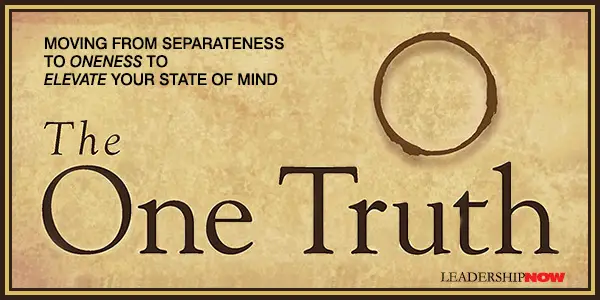
WHY do we feel anxious, disconnected, insecure, cluttered, and chronically stressed? Moments when we feel stuck with no way out. As counterintuitive as it sounds, it’s not your circumstances that make you feel that way. Jon Gordon explains in The One Truth that it’s always your state of mind that determines your performance. We are either in a low state of mind or a high state of mind. A low state of mind is characterized by a lot of thought, a lot of clutter, fear, anxiety, worry, insecurity, and/or doubt. A high state of mind consists of a lot of clarity, focus, belief, and confidence. He says that if you make a mistake in a low state of mind, you begin to question and doubt yourself. “But if you make the same mistake while you are in a high state of mind, you just brush it off and move forward. You have a next-play, next-moment mindset and look forward to the next opportunity.” Of course, we all go through high and low states for various lengths of time. It’s part of being human and how our thoughts work. When we experience a low state of mind, we need to stay in the game, understanding that this happens to all of us, and not let it get the better of us. Gordon identifies the Five D’s that sabotage us: The first is Doubt. Doubt breaks us down, and we begin to question ourselves and begin to feel weak and powerless. The second D is Distortion. These are the lies we tell ourselves about ourselves that lead to discouragement. The third D is Discouragement. “This happens when the doubt and distortion (negative thoughts) overpower your mind, seep into your soul, and cause pessimism, apathy, and hopelessness. We don’t give up because life is hard. We give up because we get discouraged.” The fourth D is Distraction. Distractions keep us from what matters most. “Distractions are the emeny of greatness and a soul-nourishing life.” The fifth D is Division. This is what happens “when you experience doubt, believe in distortions, get discouraged, and find yourself distracted. You feel divided.” We spiral downward. Gordon says it is important to realize that these negative thoughts are not coming from us initially. How do we counteract them? “The answer to doubt is trust. When doubt comes in, choose trust.” If you see negative thoughts for what they are—lies—the antidote is truth. (Truth: “You are here for a reason. There is a plan for your life.”) You can elevate your mind through gratitude. (Appreciate to elevate.”) Learn to encourage yourself. When you become distracted, stop and focus on what matters most. You defeat division through love because love connects. “Anytime you start to feel fearful and anxious and divided, if you respond with love, the fear will dissipate and you will feel united.” The path to a high state of mind is love. The solution comes from the inside—inside you. “When you fear that a circumstance has power over you, this lowers your state of mind. But when you know that you and your love are more powerful than your circumstance, this elevates your state of mind.” Fear complicates things. Love clarifies. The One Truth is that our state of mind, the thoughts we think, the words we say, the life we live, the power we have, and everything we experience is ultimately influenced by oneness and separateness. There is a battle being waged for your mind. “Life and other forces are always driving you to look outside and cause you to feel separate and weaken you.” While growing up, my parents would tell me that two wavelengths are being broadcasted all of the time: a positive one and a negative one. We are receptive to both but must choose which one we will listen to. Our first instinct is to listen to the negative. Connecting and tuning in to the positive is a developed state of being. We must overcome our instincts. Gordon put the concept this way: He thinks of the brain as an antenna that tunes into both positive and negative frequencies. “The more we tune into negative thoughts, such as fear, worry, doubt, jealousy, anger, or unworthiness, these thoughts negatively affect our antenna, which causes us to tune into and receive more negative thoughts.” There’s wholeness and there are forces constantly trying to tear you apart and create holes that lead to every dysfunction and weakness. Evil exists in the space between humans and God. With oneness there is no space for evil to exist. But if you can be divided, then evil has space to tear you and the world apart. This is not a business fable as we have come to expect from Gordon, but a heartfelt treatise on an issue of singular importance to him and to us. 
Posted by Michael McKinney at 02:13 PM
06.23.23

Beyond Disruption: Innovation Doesn’t Have to Be Disruptive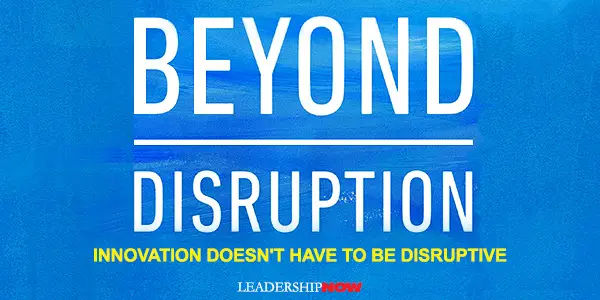
DISRUPTION has become synonymous with innovation. It is the dominant view of how growth is created. But disruptive doesn’t have to be destructive. With disruptive creation, “the new comes at the expense of the old and its associated companies and jobs, creating a win-lose or winner-takes-most economic outcome. In contrast, nondisruptive innovation is “achieved without disrupting a preexisting market and its associated companies and jobs.” In Beyond Disruption: Innovate and Achieve Growth without Displacing Industries, Blue Ocean Strategy authors W. Chan Kim and Renée Mouborgne, present another path for business growth without socially disruptive consequences. Nondisruptive innovation is not new, but conventional thinking leads us to pursue disruptive innovation before we consider growth by nondisruptive innovation. Focused on disruption, we miss opportunities for nondisruptive innovation. The authors highlight a wide variety of examples of nondisruptive-market-creating innovations to help expand our view of innovation. The goal is to identify and solve brand-new problems or seize brand-new opportunities outside the boundaries of existing industries to unlock nondisruptive creation. “This approach begins with asking: Are there brand-new opportunities we can solve beyond existing industry boundaries?” As your focus shifts in this way, so do the opportunities you see to create new markets that eat at neither the margins nor the core of existing industries and established players. In this way, virtually all the demand created is new, resulting in nondisruptive growth. The authors advocate for nondisruptive creation because it will create new jobs without displacing others. “While all new markets hold the promise of creative new growth and jobs, helping to close the jobs gap, those based on disruptive creation do so at the cost of existing jobs in the short to medium term.” They have created a framework around three paths to market-creating innovation and growth. The type of path you end up on depends on the problem you are trying to solve or the opportunity you are trying to address—the question you are asking.
As seen in the chart above, offering a breakthrough solution to an industry’s existing problem sets you on the path to disruptive creation and disruptive growth. Identifying and solving a brand-new problem or seizing a brand-new opportunity outside existing industry boundaries sets you on the path to nondisruptive creation and nondisruptive growth. Between these two ends of the market-creating-innovation spectrum is redefining and existing industry problem and then solving the redefined problem. This is the essence of blue ocean strategy, which generates a more balanced blend of disruptive and nondisruptive growth. Start With the Right Perspective If you want to generate nondisruptive creation, you must start with the right perspective(s). There are three. First, we tend to allow our thinking to be constrained by our environment rather than freed by our imagination. We are not bound by the world as it is. Look beyond the existing market and environment. Second, nondisruptive creators don’t confuse the ends with the means. “They see technology as a great enabler but realize that value innovation—offering buyers a leap in value—is what ultimately creates a nondisruptive new market.” Instead of leading with technology innovation, lead with value innovation. “Successful nondisruptive creators think value innovation first, and then technology to achieve that end.” Stay focused on value innovation. Third, nondisruptive creators look for creative ideas from anyone and everyone, not just from the “creative types.” “It takes a network of people with differing perspectives and skills to bring any nondisruptive creation into existence—to cultivate, refine, and collectively figure out what must be learned or unlearned and where the clues are as you draw from here and there and put it all together to realize your new offering.” Once we have the right mindset, the task becomes making it happen. The second half of the book deals with how to identify, unlock, and realize the nondisruptive opportunity. The challenge for governments and society will be to create new jobs that don’t displace others. That is as much an economic imperative as it is a moral one—which is another key reason why nondisruptive market creation is about to become even more important. 
Posted by Michael McKinney at 06:45 AM
06.22.23

Leading Thoughts for June 22, 2023
IDEAS shared have the power to expand perspectives, change thinking, and move lives. Here are two ideas for the curious mind to engage with: Scott Barry Kaufman and Carolyn Gregoire on mindful daydreaming: “It may be wise to question whether we should always be living in the moment and whether this is the best way to foster creative thinking. Finding this ‘middle way’ between mindfulness and mind wandering can help us enjoy the optimal benefits of both ways of thinking. Mindfulness helps us truly see what’s around us—a skill of paramount importance in life and art—but it must be balanced with giving the mind space to dream, fantasize, and simply roam free.” Source: Wired to Create: Unraveling the Mysteries of the Creative Mind Martyn Newman on how your self-confidence determines your success: “If you grew up in an environment in which you were continually criticized, you probably learned to focus on your faults and inadequacies. You may do a number of things really well, but when you make a simple mistake, you enlarge it out of proportion. It’s like your attention is conditioned to ignore the things you have done well; instead, it is drawn like a magnet to focus on the negative parts of your performance. And there is a direct relationship between your performance in any area and your level of self-confidence.” Source: Emotional Capitalists: The New Leaders Look for these ideas every Thursday on the Leading Blog. Find more ideas on the LeadingThoughts index.
Posted by Michael McKinney at 06:48 AM
06.20.23

10 Things Humility Does That Pride Does Not
HUMILITY is the basis of servant leadership. Dale Burke explains what humility looks like and what it does in contrast to pride in How to Lead and Still Have a Life: The 8 Principles of Less is More Leadership. 1. Humility accepts responsibility. Pride blames others. 2. Humility promotes objectivity. Pride lives in denial and ignores the truth. 3. Humility increases teachability. Pride is close-minded and defensive. 4. Humility stimulates creativity. Pride lives inside our heads. 5. Humility expands flexibility. Pride is rigid and demands my way. 6. Humility boosts team morale. Pride inflates the self and deflates others. 7. Humility fosters loyalty. Pride looks out for the self and takes credit. 8. Humility pursues excellence. Pride sees itself as great but actually settles for mediocrity. 9. Humility brings balance. Pride demands control and has to do it all to keep control. 10. Humility promotes and maintains relevance. Pride lacks connection with others. 
Posted by Michael McKinney at 08:53 AM
06.16.23

10 Books You Should Read This Summer 2023
CARY GRANT enjoyed reading—often in the evenings with a scotch. He was inclined to read biographies, current affairs, and self-help books. As a parent dedicated to learning, he especially loved reading to his daughter Jennifer. She remembers, “I can still feel the perfect ease of our Hampton summer days, swimming, boating, tennis, reading, and backgammon by the pool with burgers. Divine.” He told his daughter, “One must always be careful with books and treasure them.” The summer is a perfect time to relax and read, taking time to reflect. Also, as Wally Bock suggests, take the time to pick up something you’ve always wanted to read, something fun to read, and perhaps re-read a book that will help you to reconnect. Here are ten suggestions for books to inspire you and help to grow your leadership.
Music producer Rick Rubin has thought deeply about where creativity comes from and where it doesn’t, he has learned that being an artist isn’t about your specific output, it’s about your relationship to the world. Creativity has a place in everyone’s life, and everyone can make that place larger. In fact, there are few more important responsibilities.
In this fictional account of an entrepreneur's rollercoaster ride to the top, Cap Treeger crafts a series of dynamic, well-drawn lessons for anyone that wants to start or build a business.
Former IBM CEO Ginni Rometty her groundbreaking path from a challenging childhood to becoming the CEO of IBM and one of the world's most influential business leaders. With candor and depth, Rometty shares milestones from her life and career while redefining power as a way to drive meaningful change in positive ways for ourselves, our organizations, and for the many, not just the few—a concept she calls "good power."
From the preeminent presidential scholar and acclaimed biographer of historical figures including George Washington, Herbert Hoover, and Nelson Rockefeller comes this eye-opening life of Gerald R. Ford, whose presidency arguably set the course for post-liberal America and a post-Cold War world.
The Wisdom of the Bullfrog draws countless experiences from Admiral McRaven’s incredible life, including crisis situations, management debates, organizational transitions, and ethical dilemmas, to provide readers with the most important leadership lessons he has learned over the course of his forty years of service.
This book helps managers understand the postmodern worldview held by generation Z and younger millennials, how it influences their behaviour at work, and how they want to be led in the workplace.Karl Moore takes a practical and down-to-earth approach to understanding what drives millennials and generation Z and how the education system they were brought up in has informed their worldview.
From discovering how credibility stems from vulnerability, to why being honest about what you don’t yet know can empower others to feel more confident and capable of contributing, you will learn how to improve yourself while becoming a better leader.
The Leap to Leader is your trusted playbook for making the biggest jump of your career. You'll learn from more than a hundred successful leaders who share their powerful insights and compelling stories of how to make the leap, along with practical strategies and tactics for building a loyal following, moving up quickly to broaden your impact, and making the subtle but crucial mindset shifts that are required to lead others effectively.
In recent decades, midlevel managers became a favorite target for the chopping block—underappreciated, often considered a superfluous layer of the organization. Not only does this outdated perspective need to change, but the future demands it.
Stulberg offers a new model that describes change as an ongoing cycle of order, disorder, and reorder—yes, we return to stability, but that stability is somewhere new. He offers concrete principles for developing a mindset called rugged flexibility, along with habits and practices to implement it.
Posted by Michael McKinney at 09:53 AM
06.15.23

Leading Thoughts for June 15, 2023
IDEAS shared have the power to expand perspectives, change thinking, and move lives. Here are two ideas for the curious mind to engage with: Boyd Clarke and Ron Crossland on how leaders need to fill in the blanks: “When leaders communicate facts alone, constituents fill in the emotional and symbolic blanks. The same is true for the other channels. We always fill in the blanks. Remember, your brain works this way. When constituents fill in the blanks left by leaders, they construct a different message than the leader sent. Leaders, believing they have communicated completely, now fall into the fatal assumptions trap. What results is one of four things: a lack of understanding, a lack of agreement, a lack of caring, or a lack of appropriate action.” Source: The Leader’s Voice: How Your Communication Can Inspire Action and Get Results! Scott Adams on knowing where to start: “When you do something the wrong way, the people who know how to do things the right way will generally jump in to tell you what you are doing wrong. Take advantage of all that free advice. Source: Loserthink: How Untrained Brains Are Ruining America Look for these ideas every Thursday on the Leading Blog. Find more ideas on the LeadingThoughts index.
Posted by Michael McKinney at 08:03 AM
06.12.23

Winning Teams Know to Trust Their Team Members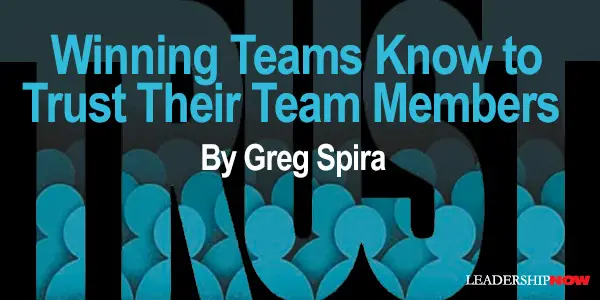
IN BUSINESS, as in sports, the aspect that distinguishes the best teams from the mediocre teams comes down to collaboration. Yet many times, companies struggle with sharing and aligning functional plans. Too often, managers put their heads down and focus only on their own departments. But setting goals in functional silos and then hoping that everything works itself out across the organization is an unlikely path to success. Instead, if they trust and coordinate with their cross-functional counterparts, they will be better able to synchronize plans. Doing so ensures that what they’re doing as an entire team will enable the achievement of the company’s overall business objectives — which often represents the difference between success and failure. Let’s apply the team sport analogy further. In ice hockey, for example, players have a decision to make when the puck is passed to them. One choice is to take the puck down the ice on their own to attempt to score a goal. They may have significant incentive to do so — they may be close to breaking a personal record or they may believe that their chance to increase their scoring statistics will make them more marketable as a player. They also may not trust their teammates’ ability to score a goal. An alternative choice is to pass the puck to another player who is in a better position and can make a coordinated play. Faced with this decision over numerous games, team members detect the repercussions when individual members regularly attempt to go it alone. The loners come to be regarded dubiously by their teammates and lose a measure of respect. Consequently, others may not instinctively pass the puck to them. Such behaviors will have an impact on the team’s win-loss record — and not in the preferred category. Consider this hockey analogy in a business context. Collaborating with other business functions is often an adjustment for sales and marketing leaders. Still, they can’t go it alone and expect to win the game. They often must consider broader implications when establishing commercial plans. Once they focus on the betterment of the entire business, however, a shift in attitude occurs. Sales and marketing leaders become more mature in their thinking about the demand plan. They consider the demand plan a request for product that they’re accountable for selling. The manufacturing organization is rarely an open bar, so to speak. Supply planners shouldn’t be forced to guess which of the demand mix, volume, or timing in the plan is going to come true, and which are hedges against possible poor performance from the manufacturing organization. Similarly, with suitable coordination, the supply chain organization’s thinking shifts. They know the pitfalls of second-guessing the demand plan. The role of supply chain organization is to create a supply plan in response to the demand plan. This supply plan considers inventory, cost, and service level parameters that are deemed optimal. Coordinating and synchronizing plans across functions enables coordinated responses to changes regarding both problems and opportunities. Doing so creates agility. When upper management leaders play their positions and trust their teammates to do what they say they’re going to do in their plans, something else happens. Responding to change becomes much simpler and in some cases, effortless. As in team sports, the regular synchronization of cross-functional demand plans in business is key to empowering teams to execute — and win.  
Posted by Michael McKinney at 07:30 AM
06.08.23

Leading Thoughts for June 8, 2023
IDEAS shared have the power to expand perspectives, change thinking, and move lives. Here are two ideas for the curious mind to engage with: John Daly on the importance of repetition: “There is a wonderful story of a man who was so in love with a woman who lived far from him that every day, for 500 days, he mailed a love letter to her. On the 500th day, she married the postman. Exposure works. Up to a point, it can enhance decision-maker’s feelings toward an idea.” Source: Advocacy: Championing Ideas and Influencing Others: Championing Ideas and Influencing Others | (Blog Post) Neen James on deliberate attention: “I think paying attention means listening with our eyes and our ears, thinking with our brains, understanding with our hearts, and giving with our souls. Deliberate attention means identifying the people, priorities, and passions that matter most in our lives and then purposefully and proactively focusing our conscious attention on them. Source: Attention Pays: How to Drive Profitability, Productivity, and Accountability Look for these ideas every Thursday on the Leading Blog. Find more ideas on the LeadingThoughts index.
Posted by Michael McKinney at 07:40 AM
06.07.23

Good Team Leaders Checklist
HIGH-PERFORMING teams have six characteristics: leadership, organization, communication, knowledge, experience, and discipline, says former Air Force F-115 pilot James Murphy. But among these, leadership comes first. Bad leadership will doom a team. Leaders hold themselves accountable for the team’s performance. And great teams support each other. In Courage to Execute he writes, “Leaders of high-performing teams encourage their people to ask these two questions: First, is there someone on my team that needs my help in achieving our objectives? Second, do I need help from someone on my team to achieve our objectives?” Murphy offers a Good Team Leaders Checklist to ensure you are creating a positive team environment on a daily basis: ○ Take responsibility: A team owns success; a leader owns failure.

Posted by Michael McKinney at 11:03 AM
06.05.23

Generation Why: How Boomers Can Lead and Learn from Millennials and Gen Z
MUCH has been written about how the Millennial and Z generations are different, their likes and dislikes, and idiosyncrasies. In Generation Why: How Boomers Can Lead and Learn from Millennials and Gen Z, McGill University professor Karl Moore asks why. He goes behind the observable behaviors and looks at the events that shaped their worldview to better understand why they are the way they are. Every generation has experienced pivotal events and cultural forces that have shaped their lives and how they react to life. Depression-era kids move differently in the world as they grow older than those that grew up in more prosperous times. Their worldviews are different, so they see the world through different values, expectations, and motivations. I am a Boomer, so my view regarding trust, authority, and truth, for example, is different than those generations that came after me. The Millennial and Z generations have a Postmodern worldview states Moore. Our education has a huge impact on how we believe the world does and should work. Moore writes: What university students are taught during pivotal years of their schooling very much influences their behaviour at work and their view of how they want to be led. Though, given their worldview, led may be too strong a word – even manage may be too strong. Perhaps it would be better to say, worked with. The world has changed, and what many of us have been taught is no longer relevant in today’s world. The chart below illustrates some of this change.
The Millennial and Z outlook involves contemporary perspectives on four important leadership issues, which Moore examines in this book:
Moore interestingly observes, “The knowledge of younger generations, to them, feels (most often, rightfully) more relevant and valuable than the “dated” understanding of the older generation. To a considerable degree, we older people are just not as valuable as older people were thirty years ago when we were starting out.” After a fascinating look at where these new generations’ worldviews came from, Moore then offers tips on how to work more effectively with Postmoderns, such as: Privilege all voices. Slow down and listen. “Millennials/Zers firmly believe that their story, or their personal and subjective truth, is as good as anyone else’s, regardless of their shortcomings in experience, age, or educational achievement. However, I argue that, contrary to popular belief, Millennials are not acting entitled, they are simply misunderstood. This is part of a larger characteristic of the Millennial/Z generations, which can be described as the death of meta-narratives and the rise of micro-narratives.” Be authentic. This is a complex area that Moore explains well, incorporating a look at both constructive authenticity and existential authenticity. “It appears that “being comfortable with oneself ” and “knowing who one is” are the most relevant attributes of Postmodern authenticity.” In the age of social media, authenticity for Millennials/Zers is characterized by the consistency and continuity between their online personas and their lives. The more congruence there is between the two, the more authentic a person will appear to be to their peers. Create purposeful organizations and align personal and professional purpose. Nearly everyone wants to find meaning in their work. What is unique to Millennials and Gen Zers is that they were “found to be seeking purpose and meaning at such an early stage in their careers.” Millennials and Gen Zers tend to be loyal to roles or identities rather than to specific companies or organizations and thus want to feel a sense of control over their careers. Mentor (and reverse mentoring). Millennials and Zers often crave one-to-one relationships in the form of mentors. They are “hungry for great mentors who are willing to put in the time, accept multiple mentees, and be reverse mentored.” Because of the coaching and feedback received throughout their formative years, Millennials/Zers likely view their mentors as parental figures or teachers, rather than in the traditional role of employer or boss. Millennials/Zers surround themselves with a network of coaches; many Millennials/Zers have several advisors they turn to throughout their careers, for issues both major and minor.” Be open to reverse mentoring too. “Reverse mentoring, done well, can result in better-aligned strategies with a turbulent world and more implementable strategies for the whole organization.” Give feedback. Millennials and Zers need feedback. They depend on it. Moore explains why. Managers can use the SKS framework both to provide effective feedback: What should I stop doing? What should I keep doing? What should I start doing? Generation Why will help you to understand not only the Millennial and Z generations but also your own. These understandings will help any leader to form a basis for mutual respect and a productive and healthy work environment. 
Posted by Michael McKinney at 09:35 AM
06.02.23

3 Telltale Signs It’s Time to Rethink Your Executive Team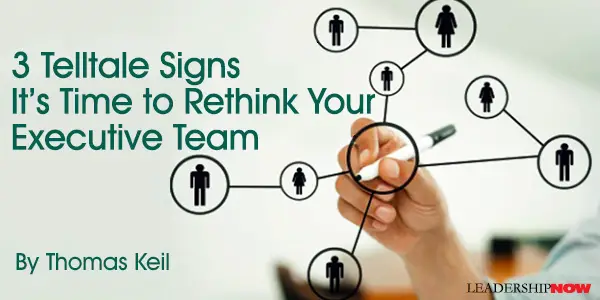
WHEN A CEO first assumes their position or joins a new company, they’re often quick to make changes to the executive team, creating a group of trusted advisors who will drive their strategic agenda. But once the CEO has been in place for a few years, this dynamic changes. Replacing these hand-picked team members becomes a highly unpleasant process, one that CEOs avoid at all costs—despite clear signs it’s necessary. Our research on CEOs and their senior leadership teams reveals that regularly reevaluating and adjusting the leadership team is crucial for optimizing a company’s performance over time. To decide if “now is the time” for a change, CEOs must watch for three telltale signs. Sign 1: A change in the business environment The most obvious signal that it’s time for a change is a large-scale shift in the business environment. In recent years, many industries have been disrupted by technological change. These changes have necessitated new capabilities and forced even the most established players to make radical departures from their business models. Take, for instance, the automotive industry. The electrification of vehicles and increasing reliance on computer software, rather than mechanical parts, have upended the knowledge and capabilities needed in the industry. Simultaneously, the traditional automotive business model—built around individual car ownership—may soon be replaced by fleets of autonomous vehicles owned by service providers rather than individual people. Companies are also facing heightened expectations about their role in society. Stakeholders and shareholders alike expect businesses to make a positive impact on the big challenges our planet faces, such as climate change, redistribution of wealth, and more equitable ways of operating and performing. Adding to the already increased complexity of the business landscape, recent events like the COVID-19 pandemic and the war in Ukraine have forced companies to fundamentally rethink where and how they operate and how they can build resilience to change. When an organization faces fundamental shifts like these, simply adding a chief digital officer or chief sustainability officer to the leadership team is no longer sufficient. Instead, leaders must reassess their leadership teams, from redefining existing roles to creating new roles to altering how different roles interact. This was the challenge Mary Barra, CEO of General Motors, faced when she took over as CEO. Barra found an organization that not only had fallen behind the competition but was also largely unresponsive to the market. To initiate the changes that would make GM relevant once again, Barra overhauled the leadership team’s composition, culture, norms, and way of operating, converting the team from a group of disconnected individuals into an integrated group empowered to deliver on GM’s goals. Sign 2: A new CEO mandate After accomplishing their initial objectives, successful CEOs often face a new challenge: defining a mandate around a new set of goals. Doing so requires CEOs to not only reinvent themselves and their organizations but also to rethink their executive teams. Bracken Darrell, CEO of Logitech, a Swiss-American computer peripherals and software manufacturer, faced this very challenge. Initially, Darrell granted the Logitech leadership team a high degree of independence, treating the company’s various businesses as individual startups. However, following several acquisitions in 2018 and 2019 and rapid growth during the pandemic, he defined a new set of goals that required a higher degree of coordination and centralization in his team. As Darrell explained: I am planning to centralize a few things. This will change the dynamic. When decisions need to be made centrally it will mean that you cannot weigh how it affects every individual business as heavily. You have to put the company ahead of each business. So you have to rethink the team. CEOs must assess whether leadership team members can transition to meet new mandates or if they need to be replaced. Sign 3: Stagnation or deterioration of individuals or the team While changes in the business environment or a new mandate are hard to ignore, the third sign is more easily overlooked. In many organizations, individual team members—or the entire executive team—may stagnate in their development and gradually deteriorate in their performance. Some senior leaders stop developing and, therefore, over time will be more and more out of touch with the organization’s needs. As one anonymous Fortune 500 CEO shared: My CFO started well. Over the first two years, he accomplished a lot to put the company on a stronger financial footing. But he was really not interested in learning about our business, and after the initial results, he simply was not able to take the organization to the next level. Similarly, leadership team performance may deteriorate when members become too comfortable with and stop challenging one another or when healthy competition devolves into politicking and backstabbing. Take, for instance, the leadership team of a European multinational corporation we’ll call Frontal. The Frontal team had been working together for over 10 years, and the roles of every member in the organization had become very set. As the CEO said in a conversation in confidence: “With every topic, I can almost foretell what each member is going to say. Everybody is trying to be nice, and no one wants to step on the others’ toes.” When individual team members or the entire executive team begins to stagnate, it may be necessary to refresh the team by replacing at least some of its members to infuse new ideas and keep sufficient creative tension. Taking Action Upon recognizing these signs, CEOs must spur into action. They should approach the situation as if they were new to the organization. Does the executive team reflect the CEO’s goals, mandate, and vision for the future? Should the CEO clean house? Or should new sets of team roles and responsibilities be defined? Although this process may be uncomfortable, regularly reassessing and refreshing the leadership team is one of the most effective routes to long-term success.  
Posted by Michael McKinney at 07:10 AM
06.01.23

Leading Thoughts for June 1, 2023
IDEAS shared have the power to expand perspectives, change thinking, and move lives. Here are two ideas for the curious mind to engage with: T.D. Jakes on disruptive thinking: “Every period of chaos brings with it a gift—an opportunity to disrupt the chaos by providing a solution rather than joining the debate. Disruptive thinking isn’t about picking a side in the argument; it’s about stepping past the argument toward a solution.” Source: Disruptive Thinking: A Daring Strategy to Change How We Live, Lead, and Love Retired Navy SEAL commander Rich Diviney on dynamic subordination: “In a high-performance team, leadership shifts to wherever, and whomever, the leader needs to be at any given moment. Those teams understand that information, challenges, and obstacles can come from any angle at any time. And they’re effective because the teammate closest to the problem is able to step up and lead, while the rest of the group defers to that temporary leader.” Source: The Attributes: 25 Hidden Drivers of Optimal Performance Look for these ideas every Thursday on the Leading Blog. Find more ideas on the LeadingThoughts index.
Posted by Michael McKinney at 03:50 PM

First Look: Leadership Books for June 2023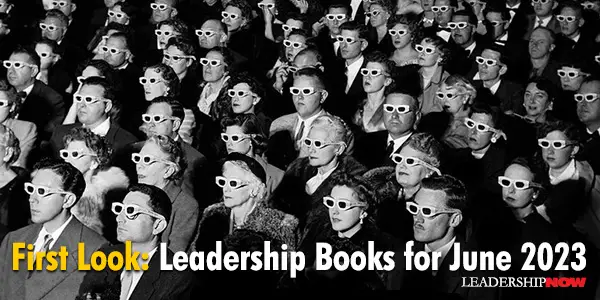
HERE'S A LOOK at some of the best leadership books to be released in June 2023 curated just for you. Be sure to check out the other great titles being offered this month.
Can a magnetic culture elevate you to unparalleled performance? Absolutely! And your journey to a magnetic culture starts by recognizing that good culture simply isn't enough to drive top performance. With uncertainty swirling around every corner in the world today, team members are reevaluating their workplaces and walking out as they look past hollow promises and perks that are a mere temporary bandage. People are searching for teams with purpose, a compelling vision, and a sense of belonging where they can pursue their full potential and live their lives to the fullest. In Leading with Significance, Joey Havens breaks through the limiting barriers of common culture theory and shows, with great transparency, the real human emotions that elevate a culture to one that is genuine, enduring, and magnetic.
In the war for customer acquisition, businesses invest millions of dollars to improve customer experience. They deliver packages faster, churn out new products, and endlessly revamp their UI, often putting greater strain on employees for diminishing returns. According to Tiffani Bova, this siloed focus on customer experience – without considering the impact on your staff – actually hinders growth in the long run. The most successful companies adopt an Experience Mindset that strengthens both employee experience (EX) and customer experience (CX) at the same time.
In Positive Chaos, Dan Thurmon helps you better understand the true nature of chaos, including the positive aspects that you can harness to learn, grow, and excel. Using illuminating findings from a first-of-its-kind study, 2022 State of Chaos in the Workplace, Thurmon reveals the current impact of chaos experienced by the workforce and shares effective strategies and leadership attributes for succeeding in chaotic times. From discovering how credibility stems from vulnerability, to why being honest about what you don’t yet know can empower others to feel more confident and capable of contributing, you will learn how to improve yourself while becoming a better leader. Chaos does not have to be confusing or debilitating. Positive Chaos will help you to learn to understand and embrace chaos, rise above the noise, and be truly proactive, helpful, and fulfilled.
When we choose to go to the gym at 6am, keep running that marathon, or stay up late to study, we are making conscious, value-based decisions that help us fulfill our goals. But even though we know that daily good choices add up to healthy routines and strong results, these days it’s just too easy to surrender to negative thoughts and old habits. How can we not? Enter Functional Imagery Training (FIT). Grounded in science, FIT helps us lengthen our Choice Point: that moment when we say to ourselves, “Am I going to make the healthy decision, or am I going to choose to take an action that I know will undermine my success?” Merging mindfulness, motivational interviewing, and cognitive behavioral therapy into a user-friendly model—the first non-academic book of its kind—The Choice Point grants us control of the decisions that define us.
In Rewired, the world’s most influential management consulting firm, McKinsey & Company, delivers a road-tested, how-to manual their own consultants use to help companies build the capabilities to outcompete in the age of digital and AI. Many companies are stuck with digital transformations that are not moving the needle. There are no quick fixes but there is a playbook. The answer is in rewiring your business so hundreds, thousands, of teams can harness technology to continuously create great customer experiences, lower unit costs, and generate value. It’s the capabilities of the organization that win the race.
Have you ever had the experience of working with someone and they just didn't “get” you? They do all the things that wind you up, put you off and drive you nuts. And have you ever worked with someone and you just didn't “get” them? You couldn't figure out what made them tick, and you know you were underwhelming as a manager and leader for them. Of course, you have. We all have. Why do those experiences keep happening? Particularly when we’ve also experienced the opposite: great working relationships that soar. In How To Work with (Almost) Anyone, Michael Bungay Stanier shares a tested process that sets up working relationships for the best possible success. It shows you how to communicate about who you are and what brings out the best and the worst in you. It gives you the tools to talk with your colleagues about how you operate, and to set a social contract for how you’ll work together (not just what you’ll be working on). It teaches you how to keep relationships strong and healthy, clear and clean.
  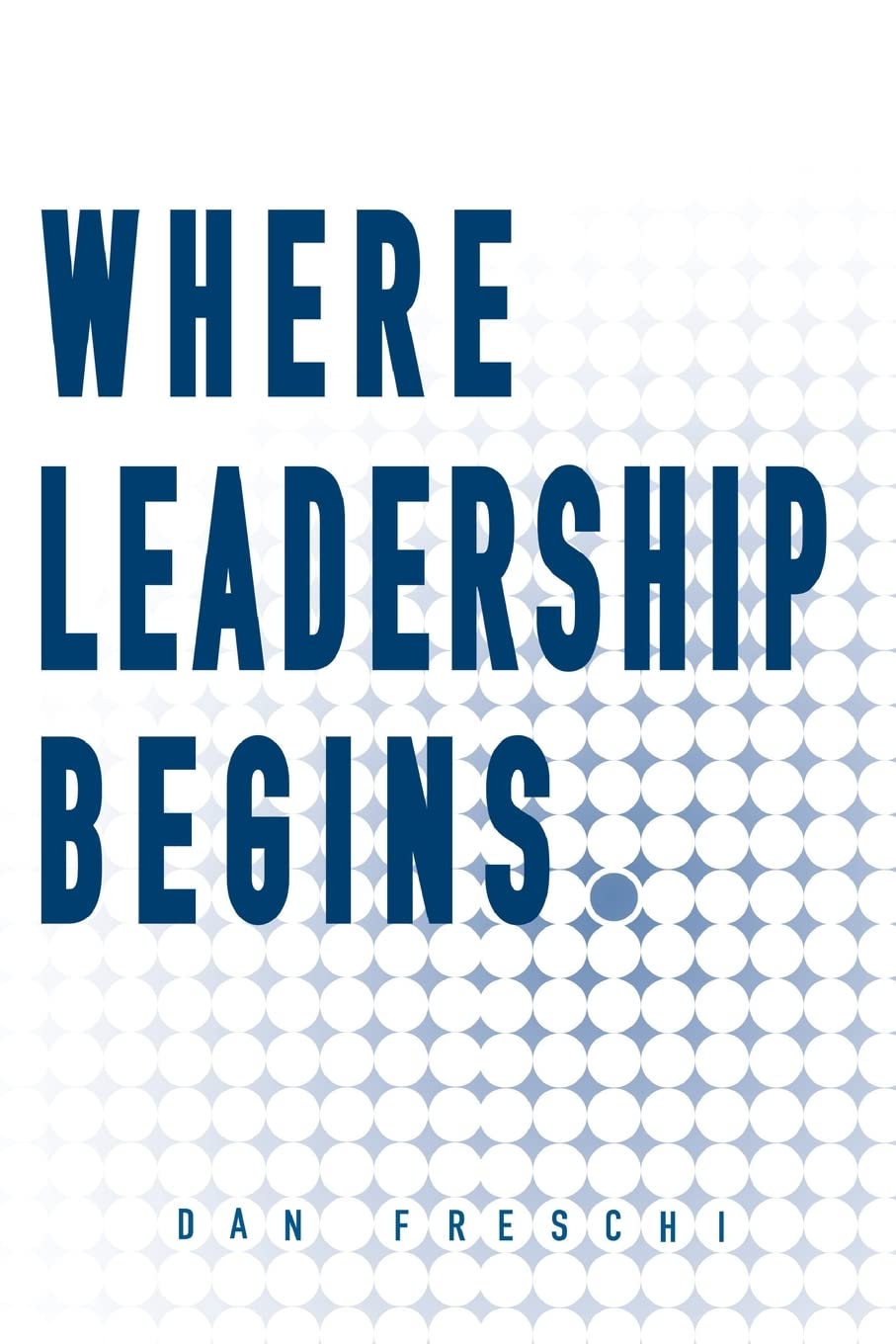 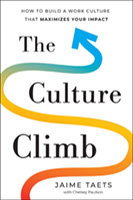
“... a mind needs books as a sword needs a whetstone, if it is to keep its edge.” — George R.R. Martin, A Game of Thrones
Posted by Michael McKinney at 06:48 AM
|
BUILD YOUR KNOWLEDGE


How to Do Your Start-Up Right STRAIGHT TALK FOR START-UPS 
Grow Your Leadership Skills NEW AND UPCOMING LEADERSHIP BOOKS 
Leadership Minute BITE-SIZE CONCEPTS YOU CAN CHEW ON 
Classic Leadership Books BOOKS TO READ BEFORE YOU LEAD |
|